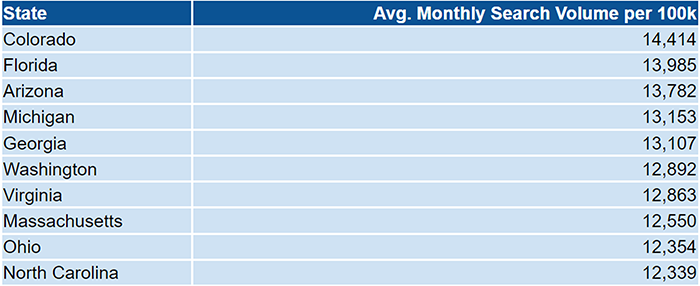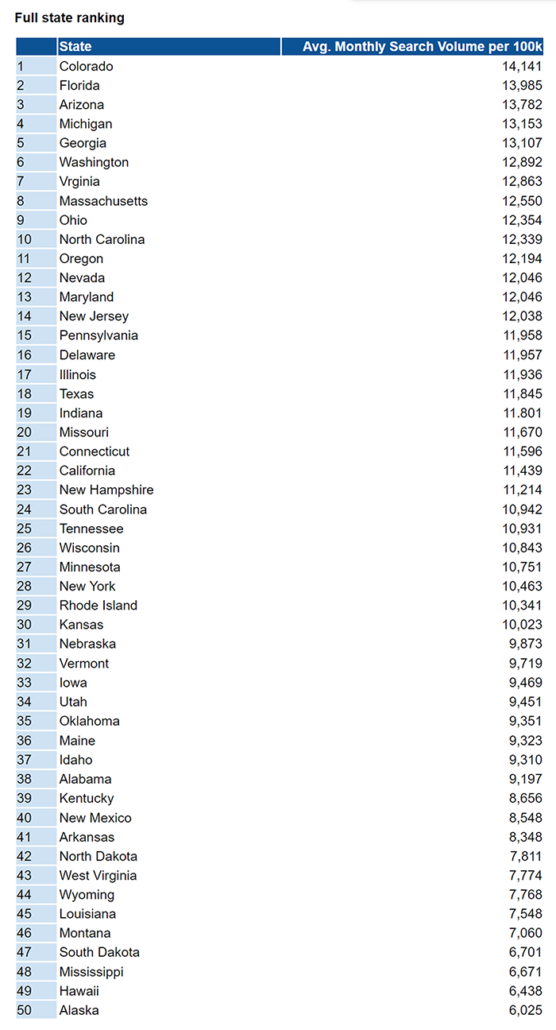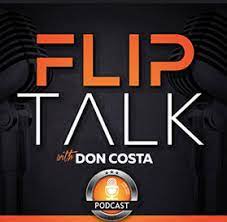Chatbots in Healthcare: Benefits and Use Cases
Implementation of Chatbot Technology in Health Care: Protocol for a Bibliometric Analysis
The bot allows medical personnel to focus more on direct customer care and complex procedures. Focusing on territories with limited access to psychological aid, it addresses critical gaps in service provision. People receive the required assistance and recommendations to improve their emotional state.
To this aim, co-design with people with disability is the main tool for achieving a satisfactory degree of accessibility and usability. When chatbots are successfully integrated with the medical facility system, extracting medical information about available slots, physicians, clinics, and pharmacies is very easy. This means that with the help of medical chatbots, users can track their health. A chatbot can monitor available slots and manage patient meetings with doctors and nurses with a click. As for healthcare chatbot examples, Kyruus assists users in scheduling appointments with medical professionals. This type of chatbot app provides users with advice and information support, taking the form of pop-ups.
Since Artificial Intelligence in healthcare is still a new innovation, these tools cannot be completely responsible when it comes to patients’ engagement beyond client service and other fundamental jobs. Nevertheless, there are still some amazing use cases that AI in healthcare can help. Chatbot developers must use different chatbots for involving and offering value to their audience. You need to know your audience and what suits them most and which chatbot works for what setting.
Chat and artificial intelligence (AI) are transforming appointment scheduling in healthcare, making it simpler and more efficient. This streamlined process results in quicker and more convenient access to care, leading to increased patient satisfaction. AI-powered chatbots handle complex scheduling tasks with remarkable efficacy, analyzing patient requests and scheduling appointments accordingly.
Challenges in this category can lead to user dissatisfaction, reduced effectiveness of the chatbot, and potentially lower engagement with the health care service it provides. The reason for this is that healthcare chatbots are designed to be simple and easy to use. This means that one of the disadvantages of healthcare chatbots is that they offer limited information. They can only offer a small amount of data at any given time since they want to make sure users get enough information. There are several reasons why healthcare chatbots offer better patient engagement than traditional forms of communication with physicians or other healthcare professionals. Healthcare chatbots are conversational software programs designed to communicate with patients or other related audiences on behalf of healthcare service providers.
With AI chatbots on the job, patients can rest easy knowing their personal and medical info is in good hands. The adoption of AI chatbots in healthcare is ushering in a new era of efficiency and cost-effectiveness in the fast-changing healthcare scene. These sophisticated virtual assistants, regardless of the cost of AI in healthcare, are change agents, providing a range of advantages that translate into significant time and money savings for hospitals and clinics. They are likely to become ubiquitous and play a significant role in the healthcare industry. Patients can benefit from healthcare chatbots as they remind them to take their medications on time and track their adherence to the medication schedule.
According to a report from Deloitte, chatbots are used by more than 90% of large companies and 64% of small businesses in the UK. The report also noted that in the next five years, half of all consumers would shop using a chatbot. The recent Facebook or Cambridge Analytica scandal has shown people how important it is to protect our data and personal information from being misused by third parties. This has become even more important as people see more use of AI systems and smart devices in our day-to-day lives. Basically, it’s not a problem if you choose an AI-powered conversational chatbot like REVE Chatbot. A patient may ask about a certain symptom or treatment option during their appointment, so being able to forward them directly the information they need saves both parties time and hassle.
Chatbot technology can also facilitate surveys and other user feedback mechanisms to record and track opinions. According to the recent report by PwC, the segment of the Intelligent virtual assistants (IVA) market, an important part of which is related to chatbots, was valued at $3.4 billion in 2019, and this number will only rise in the future. This way medical staff can better understand and record the health situation of each patient, as well as inform them about the health checkups and preventive measures to improve the immune system. If perfection in planning and project management has a name, then it’s Bhumi Goklani. She is a seasoned Project Manager at Mindinventory with over 11 years of rich experience in the IT industry. Specializing in Agile project management, Bhumi holds the prestigious Scrum Master™ I (PSM 1) certification, showcasing her deep understanding and mastery of Agile methodologies.
The technology may be used to schedule appointments, order prescriptions, and review medical records. Chatbots can also provide helpful information about particular conditions or symptoms. The purpose of this study was to conduct a systematic review of the literature on chatbot applications in the healthcare sector and analyze their benefits, problems, and future potential. Most of the research papers included in the study focused on creating or developing AI chatbots to help people access healthcare services and/or treatment from home and only a few of them aimed to get feedback uptake from these patients.
Informative chatbots offer the least intrusive approach, gently easing the patient into the system of medical knowledge. That’s why they’re often the chatbot of choice for mental health support or addiction rehabilitation services. Your chatbot can send patients reminders when it’s time to take their medicine or refill their prescription. AI chatbots have been increasingly integrated into the healthcare system to streamline processes and improve patient care. While they can perform several tasks, there are limitations to their abilities, and they cannot replace human medical professionals in complex scenarios. Here, we discuss specific examples of tasks that AI chatbots can undertake and scenarios where human medical professionals are still required.
What are the disadvantages of chatbots in healthcare?
The user retention rate provides insights into the value that users derive from their interactions with the bot.→ Ada Health has managed to entice a lot of users back to the app, indicating high user retention. One of the primary measures of chatbot performance, user satisfaction rate, measures how satisfied users are with their interactions with the chatbot. This can be determined through use of chatbots in healthcare surveys or direct feedback mechanisms.;→ Ada Health boasts a high user rating of 4.8 out of 5 over millions of users on the App Store and Google Play. This high score indicates overall user satisfaction with the bot’s performance. It goes through millions of pages of medical textbooks and numerous case studies to prepare a database that can assist doctors in diagnosing diseases.
Recovering patients (6/46, 13%) focused on patients in various stages of recovery. After reviewing the 327 full texts, we ultimately included 161 (49.2%) studies that reported the roles and benefits of chatbots. All 161 studies reported on the roles of chatbots, 157 (97.5%) mentioned their benefits, and 157 (97.5%) addressed their limitations. Each study also reported on the user group or groups of focus that the chatbot was designed to assist.
Second, misinformation originates from the immature or flaws of the chatbot algorithms. Training a chatbot is an iterative process that demands a large data set and vetting of the outputs by researchers. During a chatbot creation, the earlier versions of the chatbot often provide redundant and impersonalized information that may prevent users from using the chatbot. To increase chatbot usability, a chatbot must be precise enough in its communications with users or can connect users to a human agent if necessary [11,12].
- Despite the challenges they bring, employing chatbots to improve care delivery is essential.
- People receive the required assistance and recommendations to improve their emotional state.
- This would help reduce the workload for human healthcare providers and improve patient engagement.
- The healthcare industry is one of the most data-driven industries in the world.
- With this dynamic avenue of interaction, they help in active participation of users and healthcare providers.
These conditions often require ongoing care and support, which can be difficult to provide consistently through traditional healthcare methods. Medical chatbots allow patients to receive personalized and targeted care tailored to their needs. Read along as we delve deeper into the many benefits and uses of chatbots in healthcare and explore the endless possibilities they offer for the future of healthcare delivery through AI software development. In addition to improving patient care, healthcare chatbots also streamline patient data collection and secure storage, enable remote monitoring, and offer informative support, thereby improving healthcare delivery on a larger scale. Launching a chatbot may not require any specific IT skills if you use a codeless chatbot product.
Chatbots can also provide reliable and up-to-date information sourced from credible medical databases, further enhancing patient trust in the information they receive. Incorporating AI chatbots into healthcare practices marks a significant advancement, helping elevate patient care, streamline operations, and improve healthcare accessibility. Consistency in a medication schedule is vital for recovery, and chatbots ensure patients stay on track with their prescriptions. These intelligent tools not only remind patients when it’s time to refill their medications but also inquire about any challenges they may face in obtaining their prescriptions. Other research point to gaps in chatbots’ ability to move the healthcare needle. Researchers tested six mHealth apps targeting dementia and found that they did not meet the needs of patients or their caregivers, according to a study published in 2021.
Apps with an AI chatbot providing information support or online scheduling fall at the lower end, while solutions with an AI chatbot offering complex diagnostics or clinician support are priced at the higher end. Taking the lead in AI projects since 1989, ScienceSoft’s experienced teams identified challenges when developing medical chatbots and worked out the ways to resolve them. ScienceSoft’s software engineers and data scientists prioritize the reliability and safety of medical chatbots and use the following technologies. To accelerate care delivery, a chatbot can collect required patient data (e.g., address, symptoms, insurance details) and keep this information in EHR. Backed by sophisticated data analytics, AI chatbots can become a SaMD tool for treatment planning and disease management. A chatbot can help physicians ensure the medications’ compatibility, plan the dosage, consider medication alternatives, suggest care adjustments, etc.
How to tailor a chatbot to your brand voice
Overall, this data helps healthcare businesses improve their delivery of care. A big concern for healthcare professionals and patients alike is the ability to provide and receive “humanized” care from a chatbot. Fortunately, with the advancements in AI, healthcare chatbots are quickly becoming more sophisticated, with an impressive capacity to understand patients’ needs, offering them the right information and help they are looking for. We live in the digital world and expect everything around us to be accurate, fast, and efficient. That is especially true in the healthcare industry, where time is of the essence, and patients don’t want to waste it waiting in line or talking on the phone. It has formed a necessity for advanced digital tools to handle requests, streamline processes and reduce staff workload.
- The trustworthiness and accuracy of information were factors in people abandoning consultations with diagnostic chatbots [28], and there is a recognized need for clinical supervision of the AI algorithms [9].
- Tailoring to your distinct needs and objectives, you may find one or several of these scenarios particularly relevant.
- To create a healthcare chatbot, you can use platforms like Yellow.ai, which provide tools for building AI-powered chatbots with customizable features, integration capabilities, and compliance with healthcare regulations.
- An example of a healthcare chatbot is Babylon Health, which offers AI-based medical consultations and live video sessions with doctors, enhancing patient access to healthcare services.
If you wish to know anything about a particular disease, a healthcare chatbot can gather correct information from public sources and instantly help you. Healthcare Chatbot is an AI-powered software that uses machine learning algorithms or computer programs to interact with leads in auditory or textual modes. Northwell Health’s AI-driven chatbot assists women during and after pregnancy. The tool has been effective in identifying urgent health issues, proving its value in patient education and safety. Chatbots can give basic help or answer simple questions, but they’re not doctors.
By providing timely, personalized responses and freeing up healthcare professionals to focus on more complex tasks, these AI-driven tools signify a pivotal shift toward more efficient and accessible healthcare systems. This evolution promises significant improvements in both patient outcomes and operational efficiencies across healthcare settings. One of the coolest things about healthcare chatbots is the super-improved patient experience they bring to the table. These medical AI chatbots are fast, convenient, and super accessible, giving patients quick and personal answers to all their questions and worries. It’s a total game changer that helps cut down on wait times, provides better access to care, and leads to a more positive healthcare experience for everyone. To fully realize the potential of chatbot technology in improving health outcomes for everyone, sustained collaborative efforts from an interdisciplinary research team comprising chatbot engineers and health scientists are essential.
We anticipate a significant increase in chatbot research following the emergence of ChatGPT. In this bibliometric analysis, we will analyze the characteristics of chatbot research based on the topics of the selected studies, identified through their reported keywords, such as primary functions and disease domains. We will report the frequency and percentage of the top keywords and topics by following the framework in previous research to measure the centrality of a keyword using its frequency scores [31].
Healthcare chatbots offer instantaneous responses to patient queries, which is particularly crucial in emergency situations where immediate advice is needed. Concerning the future of research in this area, in recent months considerable attention has been focused on ChatGPT. When performing a search in the scholar repository by adding the word ‘chatGPT’ to our selected five keywords, we retrieved 244 papers dating from 2022 to the present that discuss this topic (245 from 2021). This indicates that considerable attention has been concentrated in this direction in the last year, discussing the potential of this technology.
How AI health care chatbots learn from the questions of an Indian women’s organization – The Associated Press
How AI health care chatbots learn from the questions of an Indian women’s organization.
Posted: Wed, 21 Feb 2024 08:00:00 GMT [source]
Chatbots, or virtual digital companions who engage in conversational interactions, have come a long way since their inception. From their early days as simple rule-based systems to their current incarnation as sophisticated AI-powered assistants, chatbots have evolved remarkably, shaping the future of healthcare delivery. One stream of healthcare chatbot development focuses on deriving new knowledge from large datasets, such as scans. This is different from the more traditional image of chatbots that interact with people in real-time, using probabilistic scenarios to give recommendations that improve over time. While AI chatbots are becoming increasingly sophisticated, they currently support and supplement healthcare services but do not replace professional medical advice and diagnosis. They can provide symptom assessments based on the data provided to them but should not be solely relied upon for a medical diagnosis.
It included 6 subcategories grouped into 2 categories of benefits, with 121 (77.1%) of the 157 studies contributing to the overarching theme. The promise of chatbots in health care is considerable, offering potential for more efficient, cost-effective, and high-quality care [61-65], as well as their broad spectrum of uses and acceptability [66,67]. People who have experienced a negative experience with automated systems in the past are less likely to trust technology. This can cause them to be hesitant when they interact with a healthcare chatbot, especially if they have a personal or family history of mental health issues.
Over time, chatbots in healthcare became more sophisticated, incorporating machine learning and artificial intelligence (AI) to provide more personalized responses. The healthcare industry has long struggled with providing efficient and effective customer service through chatbots in healthcare. Patients are often faced with complex medical bills and confusing healthcare jargon, leaving them frustrated and overwhelmed. However, with the evolution of chatbots, healthcare organizations are starting to offer a more personalized and streamlined experience for their patients.
How to Evaluate AI Healthcare Chatbot Performance Metrics
The ultimate aim should be to use technology like AI chatbots to enhance patient care and outcomes, not to replace the irreplaceable human elements of healthcare. Healthcare chatbot is a software powered by artificial intelligence and natural language processing (NLP) technologies. They’re designed to converse and answer specific questions that patients ask in similar ways a human caregiver would.
One of the most significant advantages of healthcare chatbots is they have no more hold time. Customers can ask their questions, receive answers, and get what they need without having to wait on hold. This can cause them to lose out on important treatments and medication, which could negatively impact their health. Because these tasks are repetitive, chatbots are excellent tools for automation by artificial intelligence systems such as healthcare chatbots. Healthcare chatbots can provide real-time assistance because artificial intelligence (AI) answers all your questions. Instead, it just needs to know how to use the information already stored in its memory banks.
This health companion app also offers personalized medical guidance and symptom evaluations. After collecting patient data by allowing them to describe their symptoms, Ada’s chatbot leverages a vast reservoir of medical knowledge to provide insights and advice tailored to individual needs. Chatbots leverage vast Chat GPT healthcare datasets such as the Wisconsin Breast Cancer Diagnosis and COVIDx for COVID-19 to interpret user queries and offer relevant insights based on predefined labels. This saves users valuable time and eliminates unnecessary clinic visits, as chatbots can provide near-accurate diagnoses with minimal input.
AI offers the potential to improve the patient experience profoundly, streamline the healthcare delivery process, make healthcare services more affordable and accessible, and much more. AI chatbots leverage data to deliver personalized responses, suggestions, and reminders, ensuring a uniquely tailored patient experience. Over time, with more interactions, chatbots learn and understand a patient’s personal needs and preferences, thereby delivering even more personalized care. Finally, another way to mitigate ChatGPT risks is to establish rules for how AI is used in the workspace and provide security awareness education to users.
Called ELIZA, the chatbot simulated a psychotherapist, using pattern matching and template-based responses to converse in a question-based format. This website is using a security service to protect itself from online attacks. You can foun additiona information about ai customer service and artificial intelligence and NLP. There are several actions that could trigger this block including submitting a certain word or phrase, a SQL command or malformed data. Comprising 15 (9.3%) of the 161 studies, this category focused on behavioral health and lifestyle changes. Behavioral change seekers (8/15, 53%) included studies on individuals seeking to change health-related behaviors. Individuals in addiction recovery (7/15, 47%) targeted those dealing with addictions.
This is one of the key concerns when it comes to using AI chatbots in healthcare. While using such software products, users might be afraid of sharing their data with bots. Business owners who establish healthcare do their best to execute data security measures for making sure their platforms resist cyber-attacks. Patients suffering from mental health issues can seek a haven in healthcare chatbots like Woebot that converse in a cognitive behavioral therapy-trained manner. A chatbot for medical diagnosis interprets symptoms, suggesting potential conditions for further evaluation. It offers an accessible way for patients to begin their care journey from home.
Unfortunately, the healthcare industry experiences a rise of attacks, if compared to past years. For example, there was an increase of 84% in healthcare breaches, comparing the numbers from 2018 to 2021. Also, approximately 89% of healthcare organizations state that they experienced an average of 43 cyberattacks per year, which is almost one attack every week.
Understanding the Role of Chatbots in Virtual Care Delivery
These security policy considerations should inform deliberations about the security challenges and concerns of AI chatbots in health care. In principle, many of the techniques and industry best practices needed to implement and enforce these security considerations are available, if not deployed on AI platforms. This paper only provides a concise set of security safeguards and relates them to the identified security risks (Table 1). It is important for health care institutions to have proper safeguards in place, as the use of chatbots in health care becomes increasingly common.
Our analysis indicates a broad and diverse user base for health care chatbots. From individuals focused on general well-being to those with specific health conditions, chatbots have been designed to cater to a wide array of needs. This category also includes issues of inequality in accessibility, as highlighted in 4 (80%) of the 5 studies. This subcategory delves into the challenges related to unequal access to chatbot technology. With 6 (3.8%) of the 157 contributing studies, this category includes regulatory and legal issues encompassing the implications of chatbot advice and overall patient safety, as highlighted in 3 (50%) studies. These issues include chatbots’ compliance with health care regulations and patient privacy laws, liability for misdiagnosis or inadequate advice, and the need for specific regulatory guidelines for their development and application.
An AI-enabled device can search through all the information and offer solid suggestions for patients and doctors. Harnessing the strength of data is another scope – especially machine learning – to assess data and studies quicker than ever. With the continuous outflow of new cancer research, it’s difficult to keep records of the experimental resolutions.
These digital assistants offer immediate responses to health inquiries, making them a valuable resource for individuals seeking quick guidance on minor ailments or wellness information. While chatbots can never fully replace human doctors, they can serve as primary healthcare consultants and assist individuals with their everyday health concerns. This will allow doctors and healthcare professionals to focus on more complex tasks while chatbots handle lower-level tasks. Healthcare chatbots can be a valuable resource for managing basic patient inquiries that are frequently asked repeatedly.
Overview of Benefits of using AI chatbots to Improve Patient Care
Patients are provided with convenient, round-the-clock access to vital knowledge and booking aid. By automating these tasks, organizations can reduce administrative workload and enhance the overall care experience. They can securely store and manage all that sensitive patient information, reducing the risk of data breaches and other security threats.
In order to add a chatbot to your healthcare website, you would need to create it using an online chat tool, such as ProProfs Chat. For example, if we conduct research through ScienceDirect, using the combination “chatbot accessibility”, we have 651 research articles as a result, 530 of which have been published in the last 3 years. Other chatbots rely on online platforms or social networks such as Telegram or Facebook [8, 22, 13, 23, 26]. The remaining ones used a variety of different methodologies like data gathering [25, 28, 21] or online interfaces like Google API’s [14].
In addition, the financial motives of private companies in the health sector raise ethical concerns about the primary purpose and application of health chatbots [73]. The requirement for sophisticated AI technology also implies increased demands on human resource expertise and storage services, potentially escalating costs [73,287]. Studies included in this review indicate that using avatars in these chatbots to simulate social behaviors can enhance user engagement and trust. There are several ways that a healthcare chatbot can help improve the patient experience.
With the recent tech advancements, AI-based solutions proved to be effective for also for disease management and diagnostics. ScienceSoft’s healthcare IT experts narrowed the list down to 6 prevalent use cases. To develop an AI-powered healthcare chatbot, ScienceSoft’s software architects usually use the following core architecture and adjust it to the specifics of each project. Chatbots could advance precision medicine efforts by offering insights into genetic profiles, personalized treatment choices, and potential medication interactions — all based on an individual’s distinct genetic composition. As chatbots continue to revolutionize the healthcare industry, their evolving technology is poised to introduce even more dynamic functionality and versatility in the near future. Here are just a few successful chatbots in healthcare to inspire your journey.
Healthcare recruiters turn to AI chatbots for hiring help – Modern Healthcare
Healthcare recruiters turn to AI chatbots for hiring help.
Posted: Fri, 09 Feb 2024 08:00:00 GMT [source]
Calpion provides high-quality, time-bound, cost-effective Computer-Aided Designing and Drafting Services to streamline your designing needs. Increase efficiency of boring work by using customizable automation that runs 24/7. With 28+ years of experience driving digital transformation we are committed to your success. He is intrigued by the developments in the space of AI and envisions a world where AI & human works together.
Similarly, the latter employs evidence-based techniques such as CBT, Dialectical Behaviour Therapy (DBT), meditation, breathing, yoga, motivational interviewing, and micro-actions to enhance users’ mental resilience. While chatbots cannot replace therapists, they serve as accessible and impartial resources for patients seeking support around the clock. Powered by AI, healthcare chatbots excel in handling basic inquiries, offering users a convenient way to access information. These self-service tools also foster a more personalized interaction with healthcare services than traditional methods like website browsing or call center communications.
Having 19 years of experience in healthcare IT, ScienceSoft can start your AI chatbot project within a week, plan the chatbot and develop its first version within 2-4 months. In healthcare since 2005, ScienceSoft is a partner to meet all your IT needs – from software consulting and delivery to support, modernization, and security. Our 150+ customers value our deep industry knowledge, proactivity, and attention to detail.
There are many business benefits of chatbots over the traditional human-centric approach. For instance, the chatbot Molly by Sense.ly utilizes patient interaction data to modify and improve individual treatment plans, demonstrating the potential for adaptive care strategies. Artificial neural networks (ANN) are used in retrieval and generative chatbots.
Beginning with primary healthcare services, the chatbot industry could gain experience and help develop more reliable solutions. AI chatbots have significant potential to enhance the efficiency and effectiveness of healthcare services. Their use extends beyond mere concept to practical implementation, promising improved patient experiences and outcomes.
One of the most important reasons behind healthcare providers’ using chatbots is that they help in acquiring patient feedback. Getting proper feedback from the users is very crucial for the improvement of healthcare services. With the help of a chatbot, any institute in the healthcare sector can know what the patients think about hospitals, treatment, doctors, and overall experience. AI chatbots in healthcare are used for various purposes, including symptom assessment, patient triage, health education, medication management, and supporting telehealth services. They streamline patient-provider communication and improve healthcare delivery. AI chatbots are undoubtedly valuable tools in the medical field, enhancing efficiency and augmenting healthcare professionals’ capabilities.
Powered by Natural Language Understanding (NLU) and Natural Language Processing (NLP), these chatbots mimic human interactions, delivering a more engaging experience. There are countless opportunities to automate processes and provide real value in healthcare. Offloading simple use cases to chatbots can help healthcare providers focus on treating patients, increasing facetime, and substantially improving the patient experience.
As demand for virtual care solidifies, healthcare organizations are increasingly relying on various technologies to deliver care remotely. These include audio-visual technology, healthcare wearables, Bluetooth-enabled devices, and chatbots. Our findings indicate that chatbots also play a key role in facilitating clinical research, consistent with https://chat.openai.com/ past work [259], a potential that needs further exploration, especially considering AI’s evolving role in health care [72, ]. Encompassing 15 (9.3%) of the 161 studies, this category targeted health care professionals and students. Medical and nursing students (8/15, 53%) covered educational aspects for students in medical and nursing fields.















































